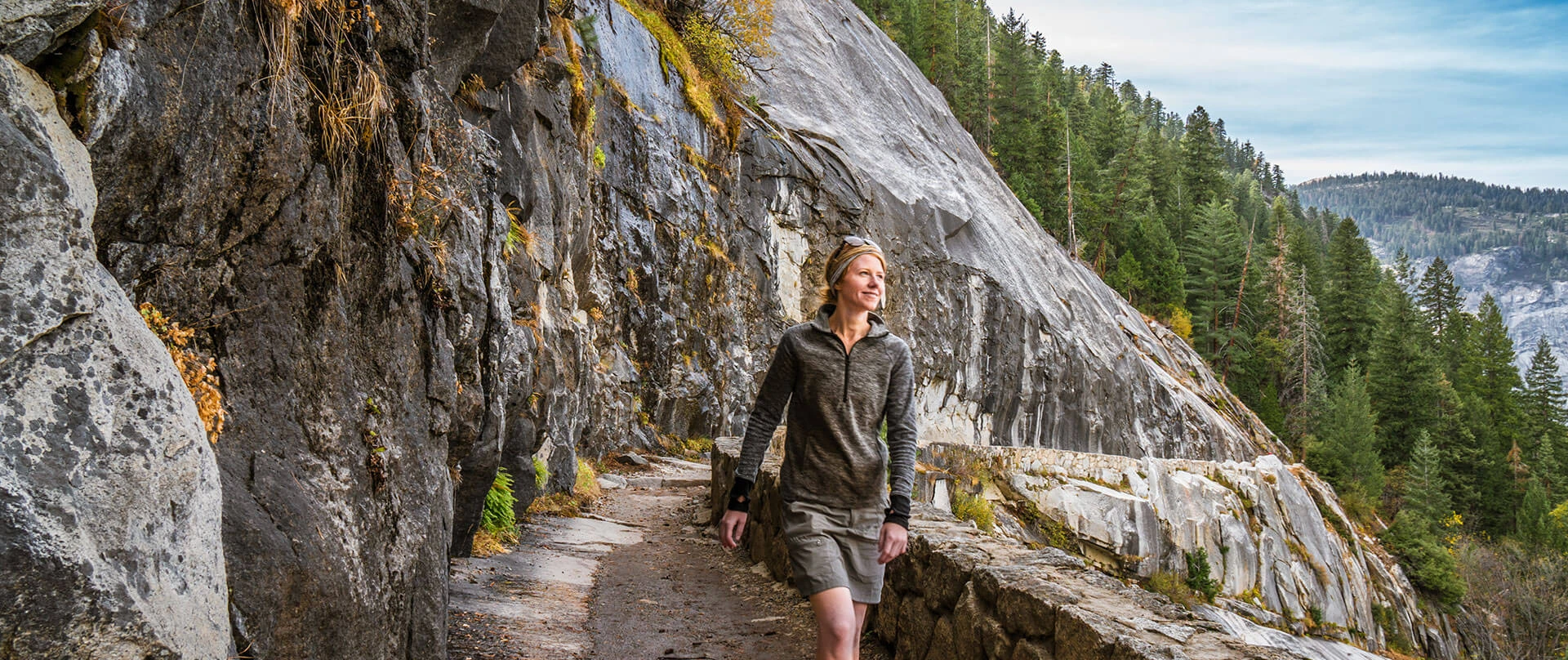One thing is certain: Yosemite National Park weather can and does change quickly. Rain, snow, wind and other weather events can occur in any season, leaving those who are unprepared scrambling for shelter or frantically searching for snow chains. Yosemite Valley weather can differ greatly from the weather at higher elevations, so its important to check road conditions and Yosemite webcams in real-time.
Spring in Yosemite
Springis a beautiful time to explore Yosemite National Park and Mariposa County. Early spring can be wet with cool evening temps and the occasional spring storm. Early spring can be high forties (9°C) to low sixties (18°C). Be prepared for the potential of snow in Yosemite in the spring, weather in the mountains can be unpredictable. It also makes for the best time to experience Yosemite’s iconic waterfalls and spot wildlife.
Summer in Yosemite
Summer is very warm in the valley but can still be cool in the higher elevation parts of the park. Summertime is consistently sunny with temperatures as high as the low-nineties (32°C) with a low of mid-fifties (13°C). However, on rare occasions, Yosemite Valley’s temperatures can exceed 100 degrees Fahrenheit (37°C). On these days, escaping to the high country or going for a swim in the Merced River are great ways to beat the heat. Here are some great tips for a summer trip to Yosemite.
Autumn in Yosemite
Autumn is one of the best seasons for hiking Yosemite. The days are still generally sunny and temperatures range form the 70’s to the 50’s (21°C to 10°C) but the nights are cool. Colors start to change around the valley floor as early as October, but the first snows have not yet arrived meaning many areas of the park are accessible and relatively quiet. The seasons are transitioning so you may need to pack a little more to make sure you are ready for sunny warm days or rainy, cool ones. Read up on when the best time to visit Yosemite is for you.
Winter in yosemite
Winter in Yosemite is one of the most beautiful times to explore the Valley Floor. Temperatures range from mid-twenties (-2°C) at the lowest to high fifties (13°C) on sunny days.
Winter in Yosemite is one of the most beautiful times to explore the Valley Floor. The high granite walls are dusted with snow and the meadows glisten with icy frost in the morning. You may encounter snow on the trails in the valley or you may not, it can vary greatly by year. However, it is almost certain some roads such as Tioga Pass and Glacier Point will be closed, as will some hiking trails.
It is especially important to check park weather in Yosemite during the winter season. Although Yosemite National Park is open all year round, winter weather can quickly impact driving, prompting road closures, delays or chain requirements on short notice.
YOSEMITE WEATHER BY REGION
Due to the vast size and drastic elevation changes in Yosemite Mariposa County each region has its own micro-climate. On a given day, Yosemite Valley weather could be beautiful and sunny, the ideal perfect day, but just a few miles away and 4,000 feet in elevation is could be 10 degrees cooler and potentially raining. Tuolumne Meadows, in the highest reaches of Yosemite National Park is known to be cooler than most areas of the park, but is also suspect to the potential of pop-up thunderstorms in mid-summer afternoons, so it is best to be prepared for anything.
FAQs Regarding weather in Yosemite National Park
What To Pack for Yosemite in the Spring and Summer
- T-shirts and tanks
- Shorts/skorts
- Well-worn hiking shoes or boots (waterproof boots may be needed for early spring hiking as some trails may still have standing water or patches of snow)
- Hiking socks
- Hiking trousers or sport leggings (not denim or jeans)
- Waterproof lightweight jacket or windbreaker (for cool evenings)
- Sunhat with wide brim
- Warm hat (for cool evenings)
What To Pack for Yosemite in the Winter
- Warm hat that covers your ears
- Fleece or other warm scarf
- Gloves (waterproof, if planning to ski or snowboard)
- Warm leggings or thermal underwear to wear under trousers
- Light trousers (denim and jeans are not recommended)
- Waterproof shoes or boots
- Light layers, including short-sleeved shirts and sweaters/jumpers
- Heavy winter coat
- Daypack, sunscreen, sunglasses and refillable water bottle
Where Do I Find Up-to-Date Weather Information for Yosemite?
For the most up-to-date highway conditions, visit Caltrans. Check for possible additional advisories from the Park Service. The National Weather Service is an additional great resource for up-to-date weather information.

